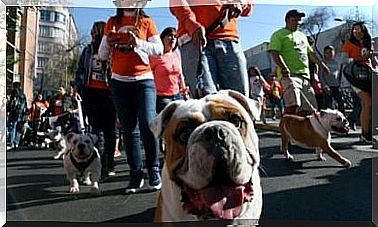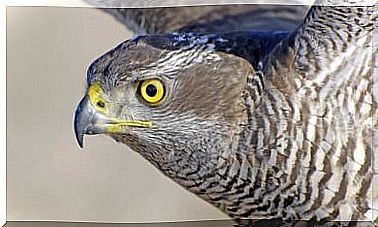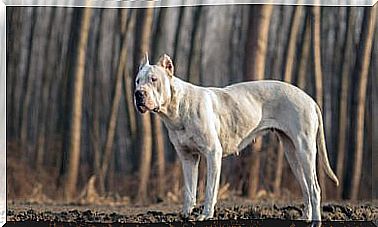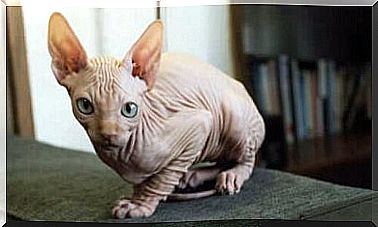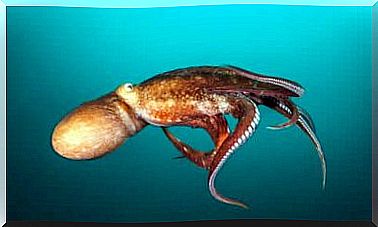Endangered Hare: Learn More
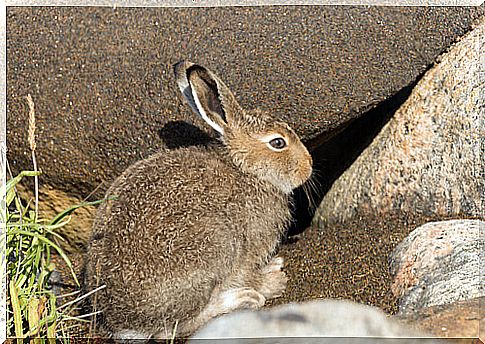
Used as bait in dog racing, these mammals so similar to rabbits are threatened by hunting and habitat alteration, among other reasons. Learn more about the danger of extinction of the hare in this article.
The hare is a mammal in the same family as the rabbits. Its hunting for sport is popular in some parts of Europe and South America. This practice is the main reason the hare is in danger of extinction.
Despite its reputation as a great broodmare, hare species are declining considerably. This situation caused environmentalists to start warning about the rescue of these animals. For this, it is important to take actions that reduce the impact on the hares’ habitat.
Hare Characteristics
A hare can weigh between three and four kilos and its size varies according to the species. The same happens with the color and size of the coat, which they use to camouflage themselves and flee from possible predators.
There are about 80 species of lagomorphs, the name given to this type of mammal. They can be found in America, Asia and Africa, having specific characteristics depending on the location.
Unlike rabbits, the appearance of hares is much more stylized. They have longer legs and are therefore faster as well as having bigger ears. Due to these special characteristics, in the past, they were used as bait in dog racing.
hare habits
Hares feed exclusively on plants and vegetables. The type of species also indicates where they live. Some are found in wooded areas, valleys and mountains. Usually, hares live on large plots of land.
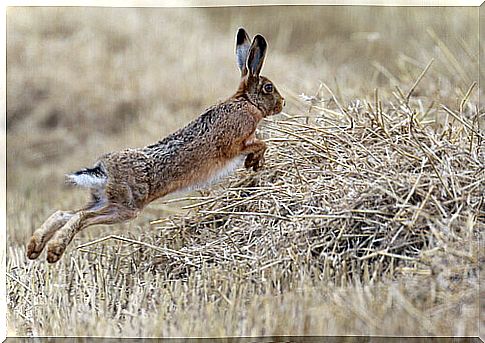
They are solitary animals that live in underground burrows and are only grouped during the heat period. Although they can be quick, their routine of searching for food makes them easy prey for eagles and bobcats. They are also the favorite food of wolves and foxes.
Another common habit of the hare is to settle in agricultural areas, where they are considered pests because they feed on the harvest. This damage to crops causes many farmers to take action against these animals.
Why is the hare in danger of extinction?
There are many reasons why the hare is in danger of extinction. However, most have to do with human action on the ecosystem. The main reasons are:
- Hunting. It represents the main reason the hare is in danger of extinction. Although some countries have taken steps to prevent this practice, hares continue to be victims of indiscriminate hunting.
- Alteration of its habitat. As a result of the expansion of agriculture and livestock in places normally inhabited by these animals.
- Actions such as preparing land and driving cattle have forced the hares to migrate to other areas, where it is more difficult to survive. The use of pesticides also affects them.
- Chemicals and traps also contribute to the extinction of these animals.
- Extermination measures. In some countries, lagomorphs are considered a pest. Especially in agricultural areas. This leads man to use measures to end the species that permanently alter the balance of the ecosystem.

How can the extinction of the hare be avoided
- Strict controls on hare hunting. Although many countries have regulations for hunting animals, it is important to ensure compliance with the regulations.
- Any type of indiscriminate hunting alters the natural cycle of the ecosystem. By decreasing a species of animal, the eating habits of other animals are changed. Thus, indiscriminate hunting puts more than one species at risk of extinction.
- Preserve the habitat. It is important to delimit the spaces destined for agriculture, as well as for grazing and driving cattle. It is also essential to delimit the space for the sanitary controls of herds, avoiding epidemics.
- One of the problems causing the hare’s extinction is that cattle also eat bushes. Under this type of vegetation, hares seek refuge and shelter from the attack of their predators. Exposure to other species also makes the hare more likely to contract disease.
- Contribute to the animal’s reproduction. The hare can bear three to nine pups in one calving and have up to four litters in a single year. The development of hare farms will undoubtedly help to reduce the danger of extinction.
